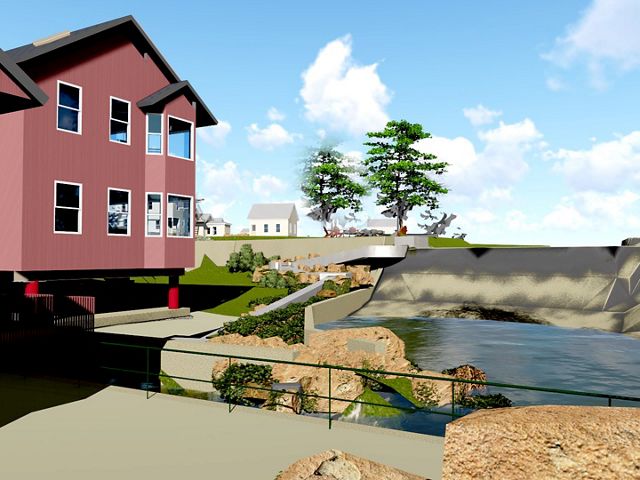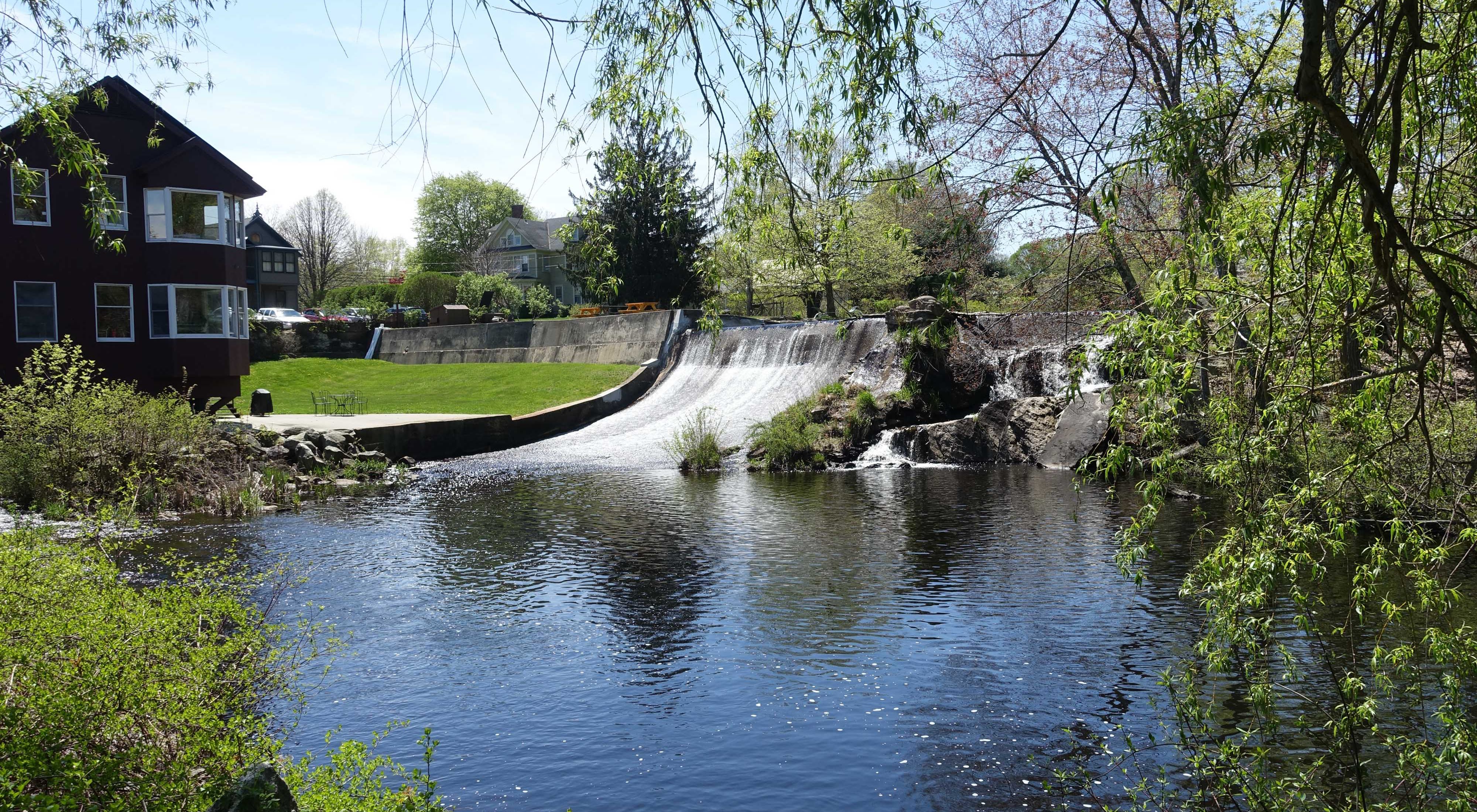For centuries, man-made dams, across the country, have provided hydropower for small mills and forges, created diversions for irrigation, provided flood control, created reservoirs for water storage and generated electricity. Many of these dams no longer serve a useful purpose and have fallen into disrepair, posing threats to downstream properties if they fail.
Additionally, dams alter the way streams function, blocking sediment and nutrients that are naturally carried in stream flow and preventing aquatic species access to habitats upstream. Dam removal can restore river functions and repair impaired food chains by allowing aquatic species to move freely up and downstream where they can eat and be eaten!
The Nature Conservancy works at hundreds of sites to implement projects to restore rivers and address the harms caused by dams. In some cases, dam removal is an option, in others, building a fishway is the best solution. Such is the case with the Mill Pond dam, an 18-foot high dam along a tributary of the Connecticut River that has been preventing access to historical freshwater spawning habitat for alewife. In places like Connecticut, there’s plenty of high-quality habitat, it’s just often upstream of a dam.
“There are more than 4,000 dams in Connecticut, many of which served a vital purpose of maintaining economies and communities during the Industrial and Colonial periods,” said Sally Harold, the Conservancy’s Connecticut Director, River Restoration and Fish Passage. “Today, these dams are threatening the health of our rivers, blocking fish migration, altering habitats and impacting watery quality.”
Working with Centerbrook Architects, the owner of the Mill Pond dam, the Conservancy is designing a fish ladder to help alewife regain access to the Mill Pond and upper Falls River. Not only do these fish need access to freshwater to reproduce and rebuild their own populations, but they also provide marine derived nutrients that have long sustained all manner of marine fish, birds and mammals. Without a robust population of alewife, there runs the risk of an entire host of creatures including turtles, otters, racoons, eagles and many marine fish being left without a critical food source.

For alewife, the process goes something like this: every spring, hundreds of thousands of alewife make their way to freshwater streams along the East Coast. In the Connecticut River, many will make a turn into the Falls River to attempt to reach upstream habitats to spawn in, including the 47-acre Mill Pond, upstream of the Mill Pond dam.
After spawning, the adult fish head back to saltwater, leaving behind their young which remain in the pond until the fall when they too seek out saltwater where they will mature until they repeat the process of their parents some 3-4 years later. The Mill Pond dam, however, prevents alewife from traveling upstream, seriously restricting the amount of spawning habitat that is available to these migratory fish.
This summer, before construction of the fishway at Mill Pond dam takes place, the Conservancy will first construct a fishway at the Dolan Pond dam, both in the Falls River. The Dolan Pond dam, a five-foot high dam, is just a half mile from the Mill Pond dam. Try to imagine this: a series of ascending pools that fish reach by swimming against the current. In a fishway, fish make their way through a cascade of rushing water, rest in a horizontally-oriented pool and then repeat the process until they’ve reached the height of the dam and the fishway exit.
Because fish ladders aren’t one-size-fits-all, the design of the ladder for the Mill Pond dam will be tailored for alewife. The fish ladder will include 10-foot long sections and a custom-built curved turning pool, rising 18-feet from the stream below the dam to the crest of the dam at a moderated slope. In some sites, where the target fish is a stronger swimmer, the slope of the fishway can be steeper.
Additionally, when the fish ladder is completed in 2019, a viewing window built into the fishway will allow the public to watch alewife on their journey upstream.
Major support for this project has come from the John T. and Jane A. Wiederhold Foundation and others, including Tom’s of Maine, the leading maker of natural personal care products. With a long-standing commitment to supporting people, communities and the planet, the company’s support is vital to the Conservancy’s mission to better protect, preserve and restore the nation’s freshwater.
Every year, Tom’s of Maine donates a portion of its profits to conserve nature for future generations. The company has been giving 10% of its profits for decades and has supported hundreds of nonprofits, including The Nature Conservancy. Tom’s of Maine’s support for the Mill Pond dam is part of a larger contribution of $1 million to the Conservancy to support water restoration projects.
